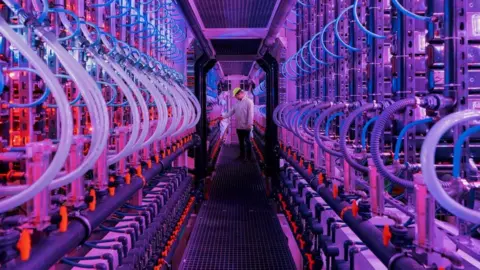 Vaxa
VaxaIn the shadow of Iceland’s largest geothermal power station, a large warehouse houses a hi-tech indoor farm of sorts that’s like nothing I’ve ever seen.
Under a strange pink-purple glow, illuminated panels buzz and cylindrical columns of water bubble away as a futuristic crop of microalgae grows.
It’s here that Iceland’s Vaxa Technologies has developed a system that harnesses energy and other resources from the nearby power plant to cultivate these tiny aquatic organisms.
“It’s a new way of thinking about food production,” says general manager Kristinn Haflidason as he gives me a tour of the space-age facility.
For much of our history, humans have consumed seaweed, also known as macroalgae.
But its tiny relative, microalgae has been a less common food source, although it was eaten for centuries in ancient Central America and Africa.
Now scientists and entrepreneurs are increasingly exploring its potential as a nutrition-rich, sustainable food.
